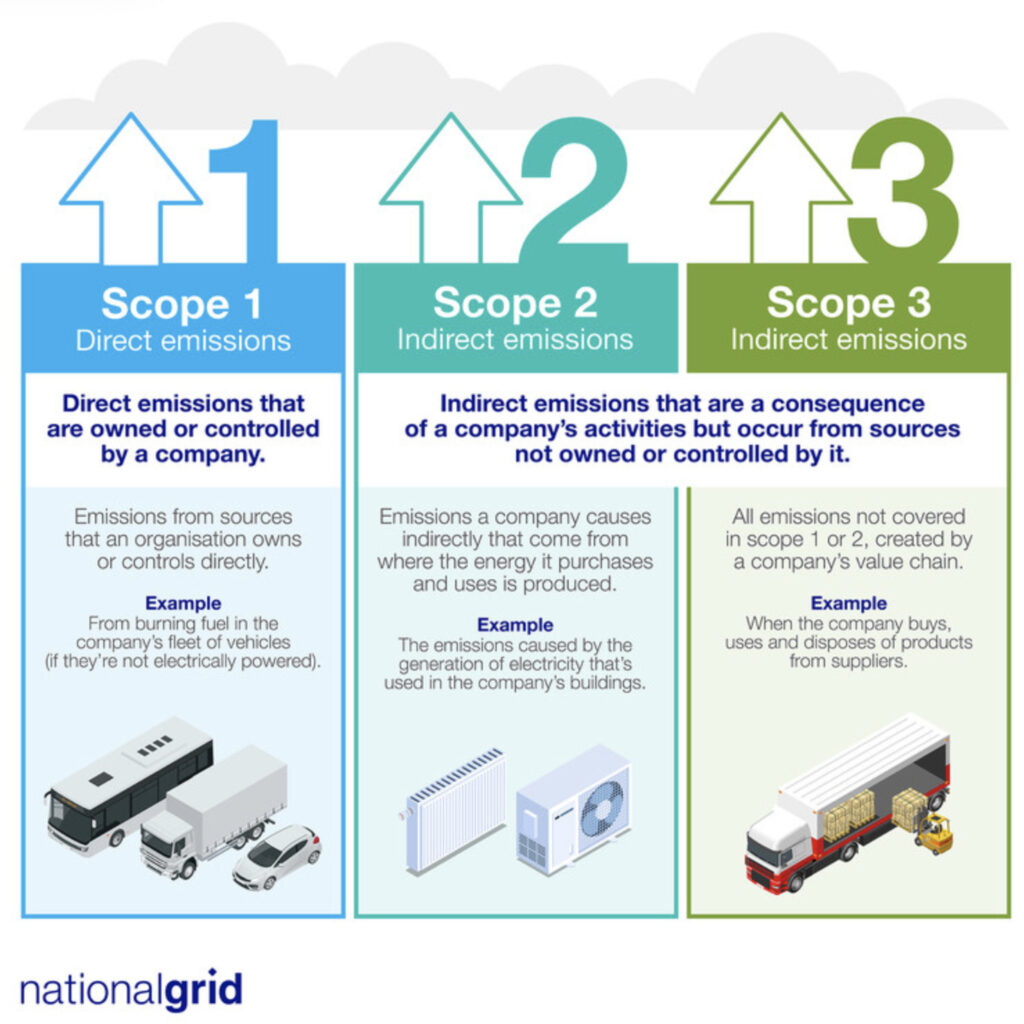Partner content: Many operators have made good progress on Scope 1 and 2 emissions, but Scope 3 (which includes supply chain) is both the toughest and biggest category
AI has big implications for sustainable telecoms. Major players are striving for a greener future but creating a sustainable supply chain is key but difficult. Now the application of AI and machine learning could reduce supply chain emissions.
Scope 3 covers indirect emissions arising from an organisation’s activities along its value chain, from upstream and downstream sources that they do not directly own or control. Scope 3 emissions (see graphic below) are both the hardest category to reduce but normally the greatest contributor to telcos’ (and any other company’s) overall emissions.

For instance, when a company buys equipment from a supplier, it incurs emissions upstream in its supply chain (the equipment’s manufacture). When consumers charge their mobile phones, they generate downstream greenhouse gas emissions. Although telcos’ end customers are responsible for a significant chunk of Scope 3 emissions, most are derived from operators’ supply chains.
Those emissions can be brought down in cooperation with suppliers through a combination of communication, rigorous product requirements, criteria for site audits, contract clauses and tougher KPIs. It requires greater engagement with the businesses along a company’s supply chain, and a committed effort to upholding best practices, many of which could be enabled by AI.
Being precise
Although we talk about ‘greenhouse gas emissions’, or ‘carbon footprints’, there are important nuances within such broad-brush terms. For example, there are different kinds of greenhouse gases. Methane, for instance, is many times more potent than carbon dioxide at trapping heat in the atmosphere over 20 years.
Effective action rests on having access to accurate information, which is why organisations serious about bringing down supply chain emissions must gain a precise understanding of what is happening where.
Data analytics and machine learning could be an option for analysing energy usage across various processes, from transportation to manufacturing. AI could also help to identify areas of high emissions for improvement. This sets the stage for developing a comprehensive carbon reduction plan, with interim targets and the support and oversight of the board.
Areas of maximum impact
From painting a clear picture of emissions across the supply chain, to assessing the main downstream sources of carbon, organisations can identify where intervention will have maximum impact.
To achieve this, telcos need to maintain life-cycle assessments (LCAs) for all their products and services. Life-cycle assessment of a smartphone, for instance, starts from the extraction of raw materials and moves through manufacture, distribution, use and disposal.
The cumulative environmental impact of its life, from creation to recycling, can be understood in fine detail along with opportunities to improve sustainability. This can be a win-win situation both the environment and the bottom line: using less packaging material, fewer circuit boards and other components is typically cheaper and reduces a product’s carbon footprint.
Engaging with the supply chain
In telecoms, companies are implementing supplier engagement programmes, sustainability criteria on supplier scorecards, and sustainability contract clauses to encourage, in a collaborative manner, suppliers’ alignment with telcos’ emissions ambitions.
What engagement looks like will depend on the company and their suppliers; but the first step is education. For a major organisation, suppliers could range from listed companies to SMEs in every corner of the world, which usually means there will be considerable diversity in levels of understanding along the supply chain.
A strong engagement programme is vital to underpin any data and insights that AI could provide, so insights are not just identified but understood and implemented.
Green and lean energy
The simplest and most effective short-term emissions-reduction strategy is to consume green energy wherever possible, and to encourage suppliers to do the same. Increasing concerns about environmental performance have over the past two years made green energy a viable alternative.
BloombergNEF reports that in 2022, there was record investment in renewable forms of energy, totalling $495 billion (€459.5 billion), although this may not signal wider adoption of renewables. After the Covid-19 pandemic, many businesses that had switched to green fuel switched back.
As some countries have or intend to adopt carbon taxes and regulators are looking at introducing carbon pricing, companies should consider locking in long-term renewable energy contracts sooner rather than later, as that move will probably be inevitable in the long term.
Renewable strategy
AI and machine learning offer options to global companies looking to develop a renewable energy strategy. Different renewable sources are available in different geographies and each has different emissions factors. It is challenging for companies with complex facilities scattered across a large geographical footprint to develop, quantify and track large data sets to prioritise and monitor investments in renewable energy in their sites and operations.
Companies should also set power efficiency goals and incentivise employees to improve the efficiency of their products and their operations. Given the high cost of energy, a concerted, targeted effort to increase energy efficiency could cut carbon emissions and costs by 10-15%.
AI-enabled technologies could optimise the performance of assets and predict and prevent failures, reducing downtime and the cost of maintenance, increasing power efficiency.
In the world of sustainable telecoms, AI potential impact is key, particularly to provide transparency across an ever more complex global supply chain. It can support decision-makers, prompting them to think more creatively and strategically about charting the straightest path possible to a greener future.
Telcos have shown their willingness to lead the way in corporate sustainability already. They must continue to do so, and AI can support them to do things better, and differently.



